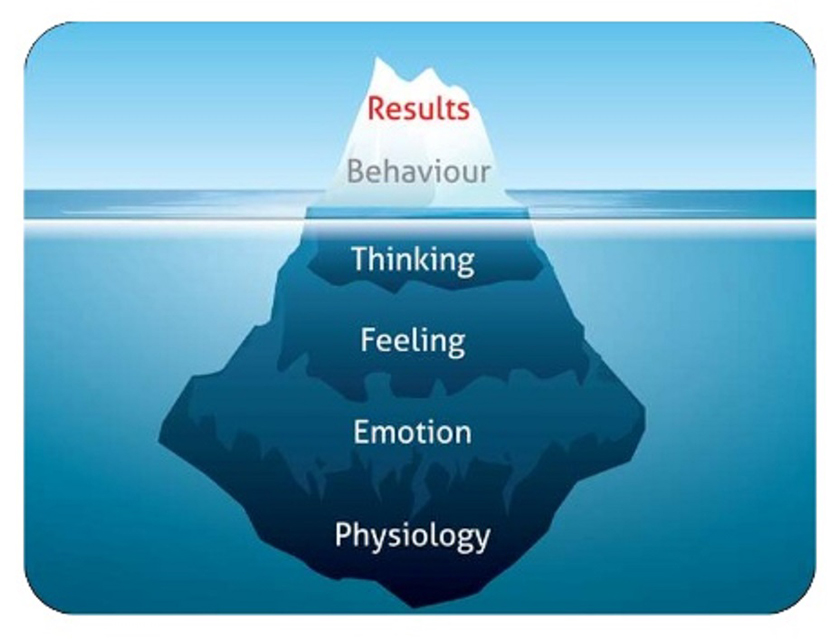
12 Feb Why Physiology Is So Important To Yoga and Tai Chi / Qi Gong
If we look at the picture attached to this article we can see that our physiology shapes our emotions. Our emotions give rise to feelings. Our feelings create thoughts in our mind. These thoughts shape our behaviour. Our behaviour creates results. Above water we can only see the tip of the iceberg. In the same way we are only conscious of a tiny fraction of what shapes and influences our behaviour.
We want to make meaningful lasting changes to ourselves in order to achieve our goals. The most effective way to do that is by influencing our physiology as that will have the most profound impact. This is the reason why a spiritual practice such as Yoga is so physical.
The picture on the left is from Dr Alan Watkins of Complete Coherence. We find his work fascinating and recommend everyone look into it.
Everything starts with our physiology. Much of the data streaming in through our senses travels around our body in the form of electrical signals. Our internal organs send signals around the body, the most powerful of which come from the heart.
The energy generated by our physiology is called Prana in Yoga and Chi or Qi in Tai Chi and Qi Gong. Breathwork is powerful way of influencing our physiology and that is why it plays such a vital role in Yoga and Tai Chi and other health systems.
The energy surging through our bodies is interpreted by the mind as feelings. A surge of high energy may be interpreted as excitement or fear whereas a low energy state may be interpreted as boredom.
Our feelings then give rise to thoughts. These thoughts enter our mind whether we like it or not and they are pivotal in shaping our attitudes, beliefs, values and strongly influence our behaviour.
Our meditation classes are structured to be in tune with the way nature has wired us up neurologically. We therefore start meditating upon the breath to impact our physiology in ways that encourage positive emotions and feelings to emerge. Next we strengthen and support these emotions and feelings with meditation techniques which cultivate love, gratitude, contentment and compassion.
These help us to override the natural “negativity bias” of our minds. Finally we focus on our thoughts. We teach several methods to use our thoughts to mould and shape ourselves into who we want to be. It’s like learning to sail. Once you learn you cease to be at the mercy of the wind, waves and currents. You are free.

No Comments